The Northern Crusades or Baltic Crusades were Christian colonization and Christianization campaigns undertaken by Catholic Christian military orders and kingdoms, primarily against the pagan Baltic, Finnic and West Slavic peoples around the southern and eastern shores of the Baltic Sea, and to a lesser extent also against Orthodox Christian Slavs.

Cēsis, is a town in Latvia located in the northern part of the Central Vidzeme Upland. Cēsis is on the Gauja River valley, and is built on a series of ridges above the river overlooking the woods below. Cēsis was one of the candidate cities for the title of European Capital of Culture 2014.
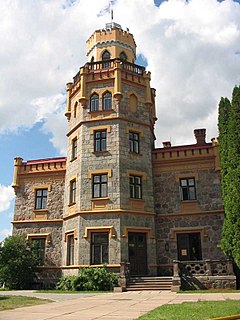
Sigulda is a town in the Vidzeme Region of Latvia, 53 kilometres from the capital city Riga.
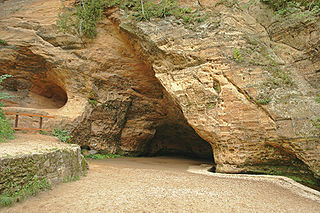
Gutman's Cave is the widest and highest cave in the Baltic countries, located on the Gauja River in the National Park of Sigulda, Latvia. It started forming more than 10 000 years ago when meltwater eroded the sandstone rock after the Ice Age. It is the oldest tourist attraction in Latvia. On the walls of the cave are inscriptions from the 17th century. The legend of the Rose of Turaida began in this cave.
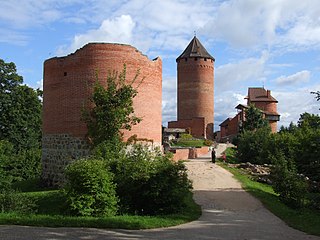
Turaida Castle is a recently reconstructed medieval castle in Turaida, in the Vidzeme region of Latvia, on the opposite bank of the Gauja River from Kurzeme.

The Livonian crusade refers to the various military Christianisation campaigns in medieval Livonia – in what is now Latvia and Estonia – during the Papal-sanctioned Northern Crusades in the 12-13th century. The Livonian crusade was conducted mostly by the Holy Roman Empire and the Kingdom of Denmark. It ended with the creation of Terra Mariana and the Danish duchy of Estonia. The lands on the eastern shores of the Baltic Sea were one of the last parts of Europe to be Christianised.
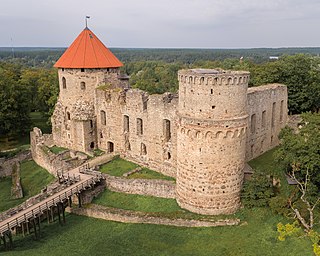
Cēsis Castle is one of the most iconic and best preserved medieval castles in Latvia. The foundations of the castle were laid 800 years ago by the Livonian Brothers of the Sword. The most prosperous period Cēsis Castle experienced was during its next owners, the Teutonic Order. It became one of the key administrative and economic centers of the Teutonic Order in Livonia and was a seat of Landmeister in Livland. The first serious damage was done to the castle during the Livonian War, when it was besieged by the army of Ivan the Terrible. In the course of the siege of 1577 approximately 300 people within the castle committed mass suicide by blowing themselves up with gunpowder. Cēsis Castle was still in use during the following century but it fell into disuse after the Great Northern War. Today the castle is the most visited heritage site in Cēsis and one of the 'must see' destinations in the Baltic states.
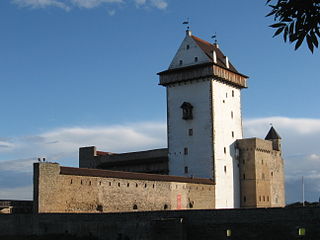
Hermann Castle is a castle in Narva, eastern Estonia. It was founded in 1256 by the Danes and the first stone castle was built in the beginning of the 14th century. The German Livonian Order purchased the castle on 29 August 1346, and owned it for much of its history.

The Krimulda Castle is located just outside Sigulda, Sigulda Municipality in the Vidzeme region of Latvia and is a tourist attraction. The castle dates from the 14th century and was destroyed in a war in 1601. Prince Liven’s living house was built in the classic style. The manor complex consists of steward’s house, coach house, Swiss cottage, etc. Home wine tasting is available by prior arrangement.

Sigulda Castle also known as Sigulda New Castle. Built in 1878 in the Neo-Gothic style as the living house for the owners of the manor, the Kropotkin family. The building has changed its owners and functions several times. Since 1993, the Sigulda Region Council has been located in the castle.

Grobiņa Castle is a medieval castle located in the town of Grobiņa, in South Kurzeme Municipality in the Courland region of Latvia. The ancient Curonian castle hill is located only 100 m from the castle. It is supposed to be the famous Seeburg, which is mentioned in Scandinavian sources as early as the 9th century.

Gaujiena Castle is a castle in the historical region of Vidzeme, in northern Latvia. It was built between 1236 and 1238. Severely damaged in 1702 during the Great Northern War, the structure was abandoned.

Lielvārde Castle is a castle in Lielvārde, a town in Ogre Municipality in the Vidzeme region of Latvia. Castle has been built at the steep bank of Daugava River, overseeing this important medieval waterway. Built before 1248 by Albert of Buxthoeven, an archbishop of Riga. During the Livonian War, Lielvārde Castle was destroyed by Russian troops in 1579. Conserved ruins up to the level of second floor.

Ludza Castle was a medieval castle built in Gothic style located next to a Catholic church, on the site of a former Latgalian wooden castle in the centre Ludza, Latvia, a small town in eastern Latgale. Its main purpose was to be an eastern outpost to control trade routes from Russia. Nowadays the impressive fragments of the castle walls, including a three-floor high fragment, still remain. The ruins are the main tourist attraction in the Ludza District, and is considered a symbol of the town.

Alūksne Castle is a castle of Teutonic Knights in current Alūksne, North-Eastern Latvia.
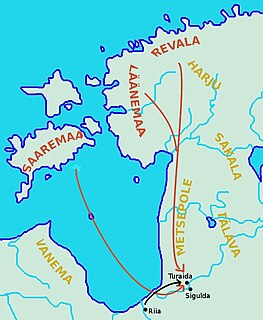
Battle of Turaida was one of the biggest battles of Livonian crusade between Estonian tribes and Livonian Brothers of the Sword. The battle took place around modern Turaida, Latvia.
The Battle of Turaida or Treiden was fought on June 1, 1298, on the banks of the Gauja River near the Turaida Castle. The Livonian Order was decisively defeated by the residents of Riga allied with the Grand Duchy of Lithuania under command of Vytenis.

Gauja Valley is a valley of the Gauja river in Latvia, which is 1 to 2.5 km wide, and the maximum depth near Sigulda is 85 m. The valley is the main constituent of the Gauja National Park founded in 1973.

Valmiera Castle was a castle in Valmiera, Latvia. Today its ruins lie in the city centre.

Kuldīga Castle also Goldingen Castle and Jesus Castle was a medieval castle of the Livonian Order in historical Courland in town Kuldīga near Venta Rapid. Today on the left bank of the Venta at the end of the old bridge one can find the former castle mill, a castle guard's house and a city park with the castle ruins on Rumba Hill.



























